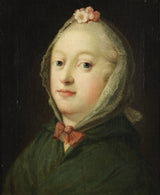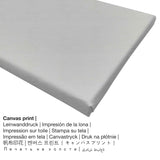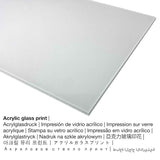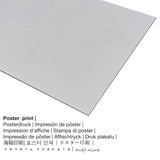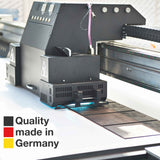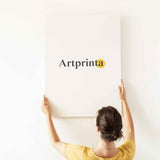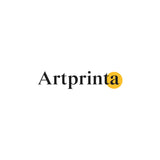Carl Gustaf Pilo, 174 - Louise, Queen of Denmark - ọmarịcha nka
Ụtụ gụnyere. Mbupu gbakọrọ na ndenye ọpụpụ.
Kedu ihe ị masịrị?
Nchịkọta nhọrọ ngwaahịa na-enye gị ohere ịhọrọ ihe na nha ọkacha mmasị gị. Họrọ n'ime nhọrọ ngwaahịa ndị a ugbu a ka ị kwekọọ na mmasị gị na nha na akụrụngwa:
- Mbipụta kanvas: A printed canvas applied on a wood stretcher frame. A canvas of your favorite work of art will give you the chance to transform your very own fine art print into a large size collection piece as you would see in a gallery. How do I hang a canvas on my wall? The great advantage of canvas prints is that they are relatively low in weight, meaning that it is quite simple to hang up the Canvas print without the use of any wall-mounts. Canvas prints are suitable for any type of wall.
- Mbipụta enyo acrylic: The print on acrylic glass, often denoted as a fine art print on plexiglass, will convert your chosen artwork into beautiful wall decoration. Your work of art is made thanks to the help of state-of-the-art UV print technology. It creates stunning, rich color shades. The major benefit of an acrylic glass fine art print is that contrasts and granular image details will be exposed thanks to the subtle gradation.
- Poster (akwa akwa akwa): The Artprinta poster print is a printed cotton canvas paper with a slight surface texture. Please keep in mind, that depending on the absolute size of the poster we add a white margin 2-6 cm around the print motif in order to facilitate the framing.
- Mbipụta aluminom (aluminium dibbond): This is a metal print made on aluminium dibond with an impressive depth effect - for a modern impression and a non-reflective surface. A direct Direct Print on Aluminum Dibond is your best start to art reproductions manufactured on aluminum. The white & bright parts of the original work of art shimmer with a silky gloss but without the glow. The direct print on Aluminum Dibond is the most popular entry-level product and is a truly stylish way to showcase fine art prints, as it draws attention on the artwork.
Important legal note: We try our utmost in order to depict our products as precisely as it is possible and to exhibit them visually on the various product detail pages. Although, the colors of the print materials and the printing can diverge marginally from the presentation on the device's monitor. Depending on your settings of your screen and the quality of the surface, not all colors are printed 100% realistically. Considering that all art reproductions are printed and processed by hand, there might as well be minor discrepancies in the exact position and the size of the motif.
Nchịkọta edemede
The more than 1840 year old artwork was made by the painter Carl Gustaf Pilo. Ụdị izizi tụrụ nha: Ogologo: 40,5 cm (15,9 ″); Obosara: 33 cm (12,9 ″) Ekebere: Elu: 50 cm (19,6 ″); Obosara: 43 cm (16,9 ″); Omimi: 6 cm (2,3 ″) e jikwa ya see ya mmanụ na kwaaji. Ọ bụ n'afọ National Museum nke Stockholm mkpokọta, nke dị na Stockholm, Obodo Stockholm, Sweden. Site n'ikike nke Nationalmuseum Stockholm & Wikimedia Commons (ọha na eze).: . Ọzọkwa, itinye n'usoro mmepụta dijitalụ dị Eserese format ma nwee oke akụkụ nke 1: 1.2, nke pụtara na ogologo bụ 20% mkpụmkpụ karịa obosara. The painter Carl Gustaf Pilo was a European artist from Sweden, whose style was mainly Rococo. The European artist was born in the year 1711 in Nyköping and passed away at the age of 82 na 1793 na Stockholm, Stockholm County, Sweden.
Iberibe tebụl nka
| Aha nka: | "Louise, Queen of Denmark" |
| Nhazi nka nka: | sere |
| Emepụtara n'afọ: | 174 |
| Afọ nka: | karịa afọ 1840 |
| Ihe osise izizi: | mmanụ na kwaaji |
| Nha nke ihe nka izizi: | Ogologo: 40,5 cm (15,9 ″); Obosara: 33 cm (12,9 ″) Ekebere: Elu: 50 cm (19,6 ″); Obosara: 43 cm (16,9 ″); Omimi: 6 cm (2,3 ″) |
| Ụlọ ihe ngosi nka / mkpokọta: | National Museum nke Stockholm |
| Ebe ebe ngosi nka: | Stockholm, Obodo Stockholm, Sweden |
| Ụlọ ihe ngosi nka ibe weebụ: | National Museum nke Stockholm |
| License: | ngalaba ọha |
| Site n'aka: | Nationalmuseum Stockholm na Wikimedia Commons |
Ngwaahịa a
| Ụdị ngwaahịa: | mmepụta nka |
| Usoro mmeputakwa: | mmeputakwa n'ụdị dijitalụ |
| Usoro mmepụta: | Mbipụta UV ozugbo |
| Ihe ngosi: | emepụtara na Germany |
| Ụdị ngwaahịa: | a na-achọ |
| Eji ngwaahịa a chọrọ: | mgbidi mgbidi, ime ụlọ |
| Ntuziaka onyonyo: | usoro eserese |
| Oke akụkụ: | 1: 1.2 (ogologo: obosara) |
| Pụtara nke akụkụ akụkụ: | ogologo bụ 20% mkpụmkpụ karịa obosara |
| Nhọrọ dị: | Mpempe akwụkwọ, akwụkwọ mmado (akwụkwọ akpa), mbipụta enyo acrylic (nwere ezigbo mkpuchi iko), mbipụta ọla (aluminium dibbond) |
| Nhọrọ nha nke akwa akwa n'elu etiti ihe na-agbatị (mbipụta kwaaji): | 50x60cm - 20x24", 100x120cm - 39x47", 150x180cm - 59x71" |
| Mbipụta iko acrylic (nke nwere ezigbo mkpuchi iko): | 50x60cm - 20x24", 100x120cm - 39x47", 150x180cm - 59x71" |
| Mpempe akwụkwọ mmado (akwụkwọ kwaaji) nha: | 50x60cm - 20x24", 100x120cm - 39x47" |
| Nhọrọ nha nha nke Dibond (ihe alumnium): | 50x60cm - 20x24", 100x120cm - 39x47" |
| Nhazi nke nka nka: | na-enweghị etiti |
Ose okwu
| Ihe nkiri: | Carl Gustaf Pilo |
| A makwaara dịka: | Pilo Carl Gustaf, Carl Gustaf Pilo, Pilo, Pilo, Pilo, Pilo Carl Gustaf, Pilo Carl Gustaf |
| okike onye nka: | nwoke |
| Obodo onye nka: | Swedish |
| Ọrụ: | onye na-ese ihe |
| Country: | Sweden |
| styles: | Rococo |
| Akwụsị: | 82 afọ |
| Afọ ọmụmụ: | 1711 |
| Obodo: | Nykoping |
| Afọ ọnwụ: | 1793 |
| Nwụrụ na (ebe): | Stockholm, obodo Stockholm, Sweden |
© Nwebiisinka nke, Artprinta.com

